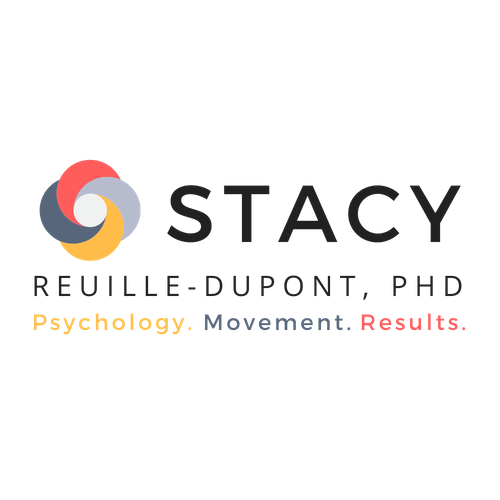As you consider what you would like to change in your life, pay attention to what you do not like, what you want to be different, allow yourself time to reflect and feel into the changes, then take informed and inspired action. Read on to work on finding the next right step for you.
Stage 1:
When we consider making changes it is important to think about what we do not like, however not dwell here. This stage is just about getting clear about what we do want. This stages sets the scene for us to find what we do want by examining what we do not want. When we are in this stage we often do not feel comfortable, we may feel like we are the victim, that we are on the wrong path, or just bored and tired of the same ol’ same old thing. This stage is an opportunity to decide. It is the point that we begin to see what is not working.
It is here that we might find it is time to stop drinking/using substances or other unhealthy coping skill because we feel so awful after a night or two of our use. It is here that we might feel uncomfortable thinking, talking, acting like our “old” self because we have new knowledge, insight, or awareness. It is here that we realize that working out was giving us more than just weight loss because we missed the emotional high by missing our movement practice this morning.
This video explains how to work with ambivalence using the Trans-theoretical Model of Change and stages of change.
Action point for this stage – Get clear on what you do not like. Reflect on why you do not like it – not to judge and keep yourself down, but to objectively determine what is not working for you. You might see that your behavior is not the kind of person you want to be any more. I see this a lot with people who used to use racist or sexist jokes without realizing the impact. Now they know the impact and do not want to be that kind of person any more, but are working to figure out how to engage people with different humor. From this point of knowing what we do not want we can begin to decide what we do want.
Stage 2:
Now that you have a clear picture about what you do not want any longer, it is time to vision what you do want. This is a very important stage. It is here that you actually make things happen. So many people want to brush past this stage in effort of action, because action feels better, yet action too quickly can create more work in the end. In this stage spend some time developing what you do want.
As you get clear on what you do not want – usually does not take us too long to do – we want to get very clear on what we do want. Why do we want to quit using substances? What is the benefit of a new eating plan? Why behave differently? As you vision your new life options, it is important to feel how you will feel when you get the new life you want. In this stage, do not worry about how you will get it. Just feel how good it will feel when you are successful. Drink in the sweet feelings of your goals, successes, and dreams.
Many people feel this is so whoo – whoo, but here is what is behind it. Science. We are chemical (hormones / neurotransmitters), electrical (heart rate, facia, brain, neuron communications) , vibrational beings (atoms and molecular structure). Every thought, emotion, and action we have creates a change in those 3 things. As those changes take place – yes through your thinking and feeling and eventually doing – you are changing the way your cells communicate with each other. Our cells use proteins to adapt to the environment around us and are always changing. As these proteins shift and change we have a different experience. Experiences change our brain structures and impact other physical structures like organs, tissues, and internal communication patterns. These changes create our internal environment. This can be helpful and supportive or hostile and forbidding.
For example as you consider a stressful event your inflammation rate rises, your breathing may shift into more upper lobe exposure, less deep breathing, and your heart rate will then quicken. This change in what is known as your heart rate variability (HRV) is tied to your nervous system.
As your HRV quickens, your sympathetic nervous system revs up, getting ready for a fight, to flee, or go into hypo arousal and keep you alive. All this, just while you think about that fight with your partner, that near miss car accident, the trauma you lived through as a kid, or your big work project. These thoughts are impacting how your body responds. This is not just about the way you think. It is also about the way you feel, as your emotions and actions also create changes in the physical body. It does not matter where you enter the square, everything is always impacting everything. We are holistic systems, not linear cause and effect systems.

Whether is psychological or physical they impact each other. It does not matter where we start the process – in our minds or in our bodies – we cannot pull apart the intersecting experience. The heart rate variability is the link between the mental and physical world. we can control it to change our perception of our experiences. (Reuille-Dupont, 2018)
Now that you have a better understanding of why thinking and feeling matter to the physical structure of you, it is time to make action happen.
Action Step for This Stage: Create a vision board, write a story about the new you/life/dream as though it has already happened, and mediate, mediate, mediate. Mediation shifts our brain waves and allows us to be more receptive to solutions and next steps we need to take. We have to let go of our own thinking and doing around the change before we can get really clear about what we need to do next. Mediation clears that space for us in as little as 5, 10, 15 minutes a day. Do not skip this activity. Read more on the importance of reflective time and accomplishing goals.
Stage 3:
Hopefully, you have spent some time sitting with what you do not like, then working on what you do want. Now it is time to act. It is important to take INFORMED action. This is something I see go sideways in lots of folks, myself included – they get antsy for action and impulsively move instead of be deliberate about the next steps. This means they often miss the most simple option and skip around … leading to longer accomplishment timing.
Ambivalence in change is uncomfortable. It is hard to sit with. There is a part of you so sure of the changes you want to make, yet there is also a part of you so scared about the changes you are about to make. There is part of you that can see clearly how much better the new way will be, and there is a part of you sad to let the old way go. As we honor both of those spaces we want to make sure we allow both to be true. This helps settle our discomfort. Once we can process our struggle we are often ready for action.
For example, the change may be quit using substances, yet your culture is full of people using your substance of choice. It may not be easy to leave them all behind today or even completely quit your substance today (sometimes this is even dangerous), but it might be doable to find a 12-step group, reach out to a sober friend, see your therapist or get one, get to the hospital, or buy a book/find an online community to help you stick to your goal of being sober (or more sober) today. We are just looking for the next step right now. Once that one is taken, we can take the next one, and the next, and next until you have multiple days, months, years sober from that substance.
Stage 3 Action Step: Since you have already set up so much and gotten so ready by creating a vision for your future self, feeling your success and accomplishment as though it has already happened, and mediated to get clear about what you next step needs to be … just take that step. Just the next one to be most effective. It does not have be big, does not have to accomplish the end goal completely yet, you are in process, and it does not have to be overwhelming. It just has to be the next right step for this moment. The one we are in, not the one you wish you were in, want to be in, or would rather be in. Just the one you are really in. Informed action makes each moment easier and they build upon each other, little by little, like building blocks building the tower … one at a time, step by step.




 Twitter
Twitter Facebook
Facebook Linkedin
Linkedin






